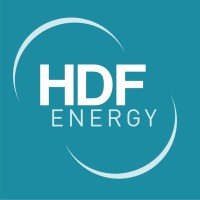Japanese consortium demonstrates low carbon hydrogen supply chain
The demonstration project has taken over three years, which resulted in valuable data and emission cuts.

In Japan, a consortium consisted of Hitachi Ltd., Marubeni Corporation, Miyagi Consumer’s Co-operative Society, and Tomiya City in Miyagi Prefecture has demonstrated a low carbon hydrogen supply chain in Tomiya City, Miyagi Prefecture, Japan.
The demonstration projects consisted of producing hydrogen, using hydrogen in a pure hydrogen fuel cell for power generation, and hydrogen usage in Hydrogen Mixed Diesel Generator (HDMG). The project is part of the Japanese Ministry of the Environment under ‘FY2017 Low Carbon Hydrogen Technology Demonstration Project in Cooperation with Local Government.’
Hydrogen was produced through electrolysis using solar energy. The stored hydrogen is then delivered to selected end-users, including homes, supermarkets, and a kids club through Miyagi COOP’s existing distribution network. The hydrogen was then integrated into pure hydrogen fuel cells, where it was converted for power and heat.
The demonstration was carried out for over three years, which resulted in a reduction of 0.8 tonnes of CO2 emissions per home. The demonstration project also resulted in valuable operation data from these facilities.
Additionally, during the demonstration, an HDMG was installed and operated to ensure a stable electricity supply during a power outage. The HDMG was jointly developed by Hitachi and Denyo Co., Ltd. and was installed at the logistics centre of Miyagi COOP to use hydrogen for power generation. The HDMG used hydrogen blended with straight vegetable oil (SVO) and light oil in a variable ratio to generate electricity with a diesel engine generator. Miyagi COOP produced the SVO (which is raw vegetable oil (waste cooking oil with removed impurities), in its store.
The HDMG demonstration showed that power generation is possible from the stored hydrogen and SVO during a power outage. Even hydrogen can be produced through electrolysis using solar energy and can then supply to HDMG for powering. Moreover, high hydrogen purity is not required for HDMG as it is essential for fuel cell operation. Furthermore, the HDMG can produce electricity with only heavy oil or light oil, without hydrogen, and increasing the co-firing rate of hydrogen improves power generation efficiency.
The use of SVO is an effective use of waste liquid, and the SVO ratio can be linked to the grid under the Feed-in Tariff Scheme for Renewable Energy (FIT).
The partners are now promoting the project further, starting with the establishment in Tomiya City and extending it across Miyagi prefecture and elsewhere to achieve carbon neutrality.
